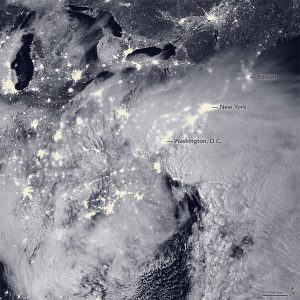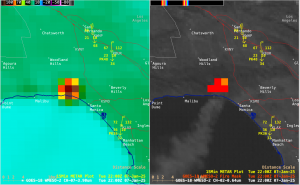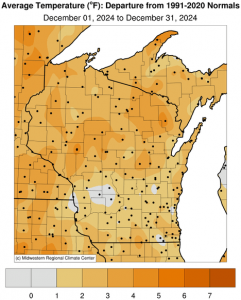
The accompanying photo was taken by Daniel Dettmers in the morning of February 4 on frozen Lake Kegonsa. The high on the previous day was 37°F. This caused puddles of water to sit on the ice of Madison’s regional lakes during the day. Tuesday morning’s low temperature was below 20°F with calm winds. These are just the right conditions to form what are called ‘ice spikes,’ as shown in the photograph.
When water freezes, it expands and becomes less dense. Ice floats on water. But if the lake ice is thick, when puddles form on a warm day, they sit on the ice surface. With the cold nighttime temperatures, the surface of the puddle freezes, trapping liquid water below. As the puddle freezes, it can leave a small hole in the surface of the ice.
The puddle water is sitting on ice, and with the cold nighttime conditions, the water below the surface freezes from the outside inward. The expansion of the water as it freezes, slowly pushes some of the puddle water up through the hole. This water freezes around the edge of the hole forming a hollow tube. As the puddle continues to freeze, the hollow spike grows in length as water is pushed up into it. Eventually, the whole thing freezes and a solid spike of ice is left. The energy required to push the puddle water up into the spike comes from the expansion of the water while it is freezing.
While light winds can help in the formation of spikes, ice spikes don’t form under windy conditions.
Other names for ice spikes include “ice candles” and “ice towers.” They have been observed in bird baths and outdoor pet water bowls as well.
Steve Ackerman and Jonathan Martin, professors in the UW-Madison department of atmospheric and oceanic sciences, are guests on WHA radio (970 AM) at noon the last Monday of each month. Send them your questions at stevea@ssec.wisc.edu or jemarti1@wisc.edu.





